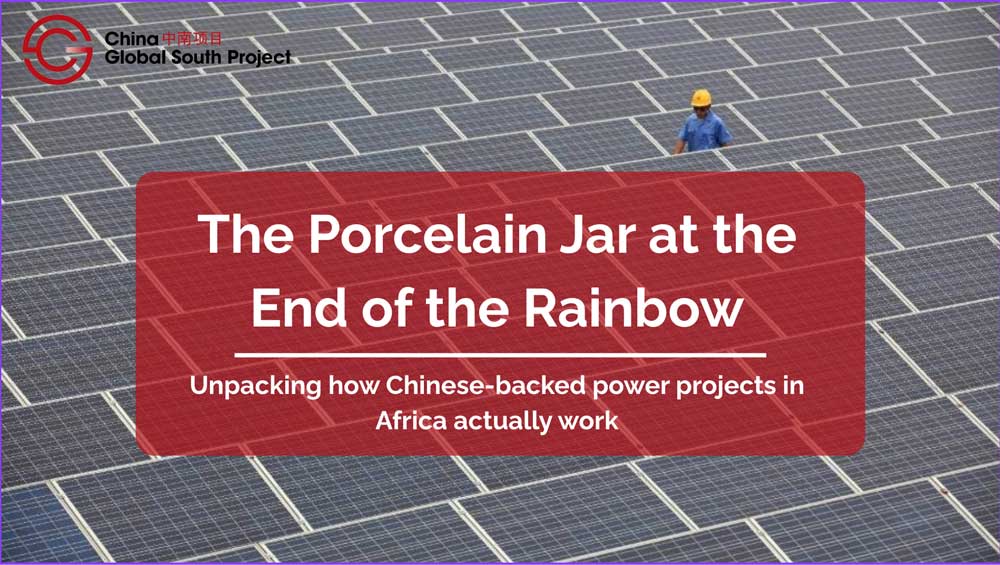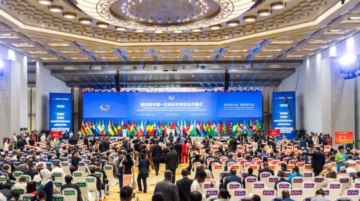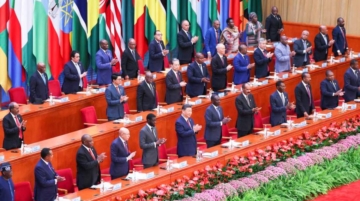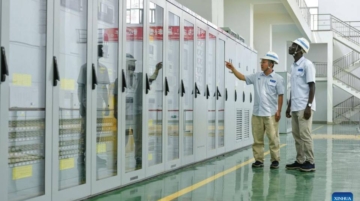
Building large-scale infrastructure requires more than engineering expertise. Just as critical is how the project is financed, how capital is raised, structured, and repaid. In Chinese-supported power projects across Sub-Saharan Africa, finance is often the entry point: the mechanism through which projects are proposed, evaluated, and ultimately selected. Financing arrangements shape not only which projects move forward, but also how they are delivered, what they cost, and what risks governments are expected to carry.
While the previous article explored the motivations behind China’s engagement and outlined key actors and investment destinations, this instalment builds on that foundation by examining how these motivations are operationalised through specific financing models. By exploring the actual mechanisms of state-backed and private finance, this article begins to trace the real-world implications of China’s presence in African energy markets.
China’s approach to financing power infrastructure in the region has been shaped by two distinct modalities: state-sponsored finance and foreign direct investment (FDI). These two pathways reflect different underlying motivations, financial structures, and risk-sharing arrangements. While both have played a role in China’s overseas energy engagements, they operate on fundamentally different logics and timelines.
The dominant approach across the continent has been state-sponsored finance, particularly through China’s two main policy banks, the China Export-Import Bank (CHEXIM) and the China Development Bank (CDB). These institutions provide loans to host governments for large infrastructure projects, frequently under terms that blend concessional and commercial features. In most cases, these loans are tied to the use of Chinese goods and services, with construction carried out by Chinese state-owned enterprises (SOEs).
State-sponsored finance is typically delivered through integrated investment packages that bundle financing, construction, and equipment supply into a single deal. A key model within this approach is the EPC+F structure: Engineering, Procurement, and Construction plus Finance. Under EPC+F, a Chinese SOE proposes to design and build a power plant and arranges financing from a policy bank as part of the same transaction. Once an agreement is reached, funds flow directly from the policy bank to the contractor, based on progress reports and milestone certifications.
This bundling has trade-offs: Governments often lack the opportunity to benchmark EPC costs, as there is no open bidding for the contractor. In practice, this has sometimes led to inflated costs, weakening the benefits of concessional finance. Further, loans disbursed directly to contractors may bypass national budget processes, reducing opportunities for domestic oversight and institutional learning. Additionally, these arrangements can lock countries into rigid terms even when underlying assumptions change. Transparency, flexibility, and alignment with national planning frameworks can suffer. Alongside these integrated packages, China has also used resource-backed finance, a model where loan repayments are tied to commodity exports. This hybrid model will be explored in greater detail an upcoming instalment.
Despite these challenges, it is important to recognise why bundled state-sponsored financing has remained attractive to many African governments. These deals offer a one-stop-shop solution: funding, construction, and equipment are delivered as a single package, often with fewer upfront costs and faster execution timelines than multilateral or private-led alternatives. For governments facing immediate electricity deficits and political pressure to show progress, the appeal of this model is clear. Bundled deals can also help bypass domestic procurement delays, sidestep fragmented budget cycles, and simplify negotiations by reducing the number of stakeholders involved. In environments where institutional coordination is weak or donor funding is unpredictable, these attributes are not trivial. However, they come at a cost. The very features that make bundled finance expedient – speed, simplicity, and state-to-state negotiation – also limit scrutiny and flexibility. For instance, governments may have little say in contractor selection, project scope may be overly influenced by the contractor’s interests, and there may be insufficient room to revise timelines or pricing when conditions change. Moreover, because bundled deals often originate from unsolicited proposals, they can undermine national planning processes and crowd out more competitive or locally appropriate alternatives. Over time, this can weaken sector governance and make it harder to build a coherent long-term infrastructure pipeline.
In contrast, Chinese foreign direct investment is a more commercially oriented form of engagement. This involves Chinese firms investing their own capital into projects, typically through joint ventures or special purpose vehicles. These firms are driven by profit, not policy. In this form of investment, the private Chinese investors take on more project risk and require. An example of such an investment is the Sunon Asogli power plant, which is a Chinese-owned independent power producer in Ghana. These projects demand regulatory certainty, cost-reflective tariffs, and bankable power purchase agreements. In many African markets, these conditions are weak, which helps explain why Chinese FDI has remained limited despite China’s massive global investment profile. Chinese SOEs continue to dominate large-scale infrastructure, supported by policy banks and diplomatic mechanisms.
Still, both approaches, state-sponsored finance and private investment, reflect the strategic pragmatism of China’s overseas engagement. While integrated finance has delivered scale, private-led models may offer more sustainable performance incentives. For African governments, strengthening regulatory frameworks, enhancing transparency, and improving project preparation will be critical to securing better outcomes.
Together, China’s two main financing pathways offer distinct trade-offs in terms of speed, scale, and accountability. State-sponsored finance has streamlined the process of securing funding through bundled EPC+F structures, but often at the cost of oversight and flexibility. FDI, though less common, tends to align more closely with commercial performance. Understanding these financing models is just the beginning. In the next article, we turn to the contracts that give these models structure, unpacking the legal agreements that define how projects are implemented, how risks are allocated, and how repayment is secured.

About This Series
This article is part of “The Porcelain Jar at the End of the Rainbow,” a new series from the China Global South Project that unpacks how Chinese-backed power projects in Africa actually work. As global development partners shift and electricity demand rises, understanding China’s role — from financing and procurement to project delivery — has never been more important. Each installment offers practical, field-informed insights for policymakers, developers, and researchers navigating complex infrastructure environments.
The series is complemented by CGSP’s interactive Energy Tracker, a tool that maps Chinese-supported power generation projects across Africa, including data on capacity, financing, ownership, and implementation status.









